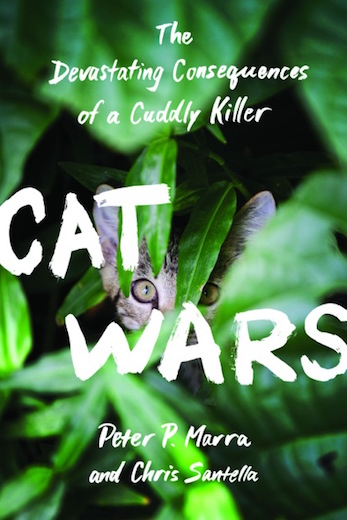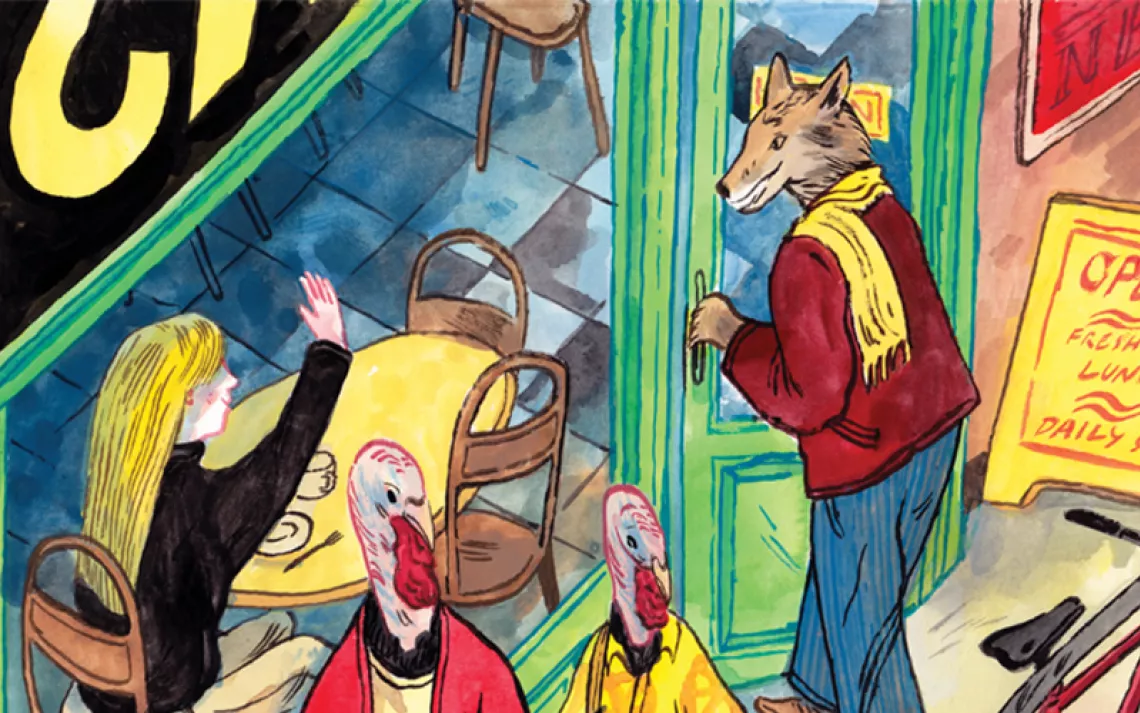When Cats Attack

Photo courtesy of Princeton University Press.
If you think politics gets people worked up, try confronting cat owners about their feline companions. Peter Marra, a conservation biologist and director of the Smithsonian Migratory Bird Center in Washington, D.C., has drawn scorn, ridicule, and even threats for his long-standing crusade against free-roaming cats and their backyard killing sprees. He believes that all cats should be kept indoors, or, if necessary, euthanized for the sake of birds and other wildlife. He’s now bracing for even more controversy with the publication of his new book, Cat Wars: The Devastating Consequences of a Cuddly Killer (Princeton University Press, September 2016), cowritten by Chris Santella. Marra spoke from his home in Maryland. —Chris Woolston
*
You’ve warned for years that outdoor cats kill a staggering number of birds. How many are we talking about?
We’re still trying to figure that out. According to the best current estimate, cats kill between 1.3 to 4 billion birds each year in the United States. More than 4 billion certainly isn’t out of the question. Some people question the size of that range, but there are some uncertainties. For one thing, nobody knows how many cats are out there.
Even with those kinds of numbers, you’ve had trouble getting people to take this issue seriously. Why is that?
Billions is an abstract concept. People aren’t trained to think on that scale.
How do cats compare with other environmental threats?
Cats are incredibly devastating. DDT (the banned pesticide) never caused the extinction of an entire species. But cats have caused a minimum of 33 extinctions. They’re definitely one of the most damaging invasive species in history, along with rats and house mice.
Can you give an example of an endangered species that is imperiled by cats?
One really sad example is the Hawaiian crow (Corvus hawaiiensis). It was decimated by introduced diseases, including toxoplasmosis, a parasitic illness that spreads through cat feces. The species is now extinct in the wild. An attempt to reintroduce the crow in the 1990s failed, partly because several individuals died from toxoplasmosis.

You note in the book that toxoplasmosis is a threat to humans, too. How serious is that?
It’s very serious. Among other things, toxoplasmosis is implicated in the development of schizophrenia. It was long thought that the infection was usually harmless in healthy people, but we may not know the long-term effects. Jaroslav Flegr, a parasitologist in the Czech Republic, believes that toxoplasmosis will someday take a larger toll on human health than malaria.
The typical backyard cat kills mice, sparrows, and finches—animals that aren’t exactly rare. Should cat owners care?
Sparrows have a right to live, too. Besides, our focus can’t be only on protecting species that are declining. We have to protect them while they are still common. I have catbirds in my backyard. They are common, but they aren’t as common as they used to be. That means they aren’t completely filling their ecological role.
What should be done about outside cats?
Housecats should be inside, period. Cats that don’t have owners are trickier. We should start by identifying the cat colonies that pose the biggest threat, including those near national parks or other wildlife areas. I would get those cats out of the environment as soon as possible. The ones that can be adopted should be adopted. If not, they should be euthanized.
Some organizations claim it would be more humane to control feral cat populations by trapping cats, sterilizing them, and releasing them back into the wild. Why do you recommend euthanasia?
Trap, neuter, and release—also called TNR—doesn’t work. It leaves the cat out in the environment for another eight years. “No kill” is an ideal that we should be striving for, but it’s not reality. As a culture, we aren’t comfortable with euthanasia, but it’s used all over the world.
Is it cruel to keep a cat inside for its life?
Cat owners think they are doing the best thing for their cat by letting it outside. But it’s not fair to kick cats out the door. They can be hit by a car or eaten by a coyote. They can catch a disease. That’s why outdoor cats have half the average lifespan as indoor cats. The Humane Society agrees that cats should be inside.
Don’t cats get bored if they’re inside all the time?
You can keep a cat stimulated inside. It just takes a little bit more work. That’s called responsible pet ownership. If you really want your cat to spend time outdoors, you can build a catio (an enclosed outdoor space). You can even train it to walk with a leash.
What about declawing a cat? Or putting a bell around its neck?
Declawing is inhumane. And bells don’t work. The only solution is getting the cat out of the environment.
Do outdoor cats have some value? Don’t they reduce disease caused by rodents?
The evidence that cats can slow or prevent rodent-borne diseases isn’t convincing. Cats aren’t going after Norway rats. If you have a problem with field mice, you should put out traps.
Do you expect your book to change the conversation around cats?
I don’t think we are going to change the minds of people who are already convinced that cats should stay outside. But there are a lot of people who just don’t know about the issue. Those are the people I’m trying to reach.
How do you respond when someone calls you a cat hater?
I’m an advocate for animals, including cats. I want what’s best for them. And the best thing for cats is to be inside.
Why are you so passionate and outspoken about cats?
We’re in the middle of the sixth great extinction. The causes are very complex. Habitat loss and climate change are difficult to manage. But cats are something we can do something about. My eyes are wide open. I wouldn’t be a responsible scientist if I said nothing.
 The Magazine of The Sierra Club
The Magazine of The Sierra Club







